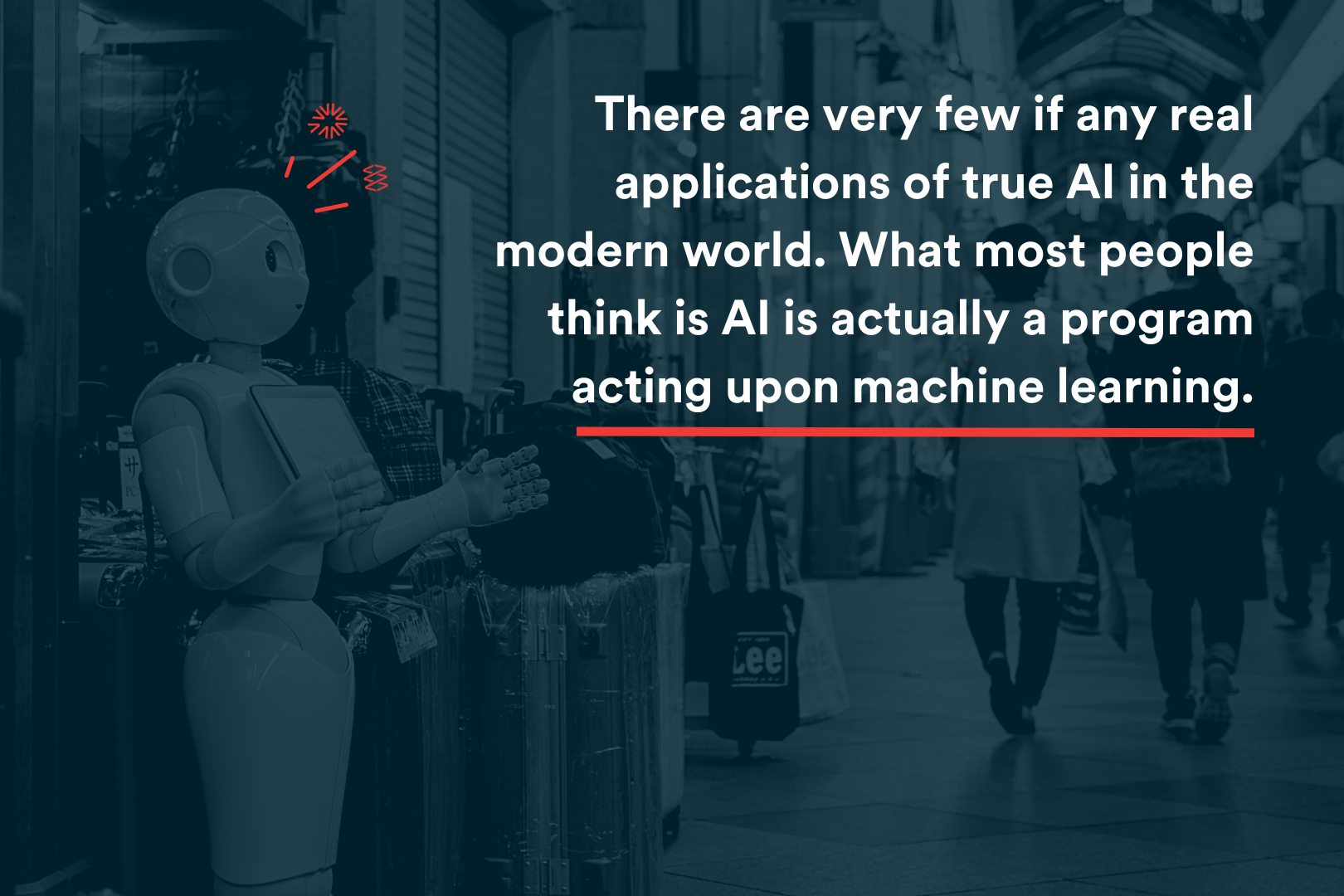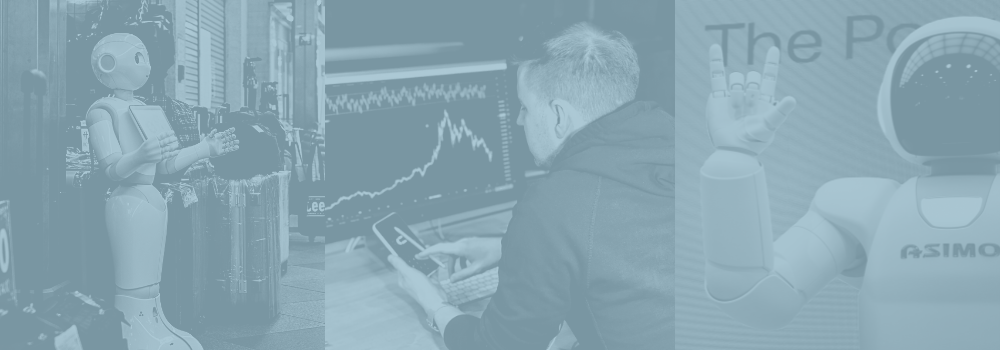artificial intelligence | machine learning | Defining Dev
In today’s world, it’s nearly impossible to not have heard the words, “artificial intelligence” or “machine learning” when talking about some of the most bleeding-edge technology across multiple fields. (Cough, cough — ChatGPT!)
Mentions of artificial intelligence and machine learning are everywhere, sparking conversations and leading the charge in innovation. Both artificial intelligence and machine learning are more relevant today than ever before — so what makes them different from each other? And why do they usually get mentioned together so much? Let’s clear up some misconceptions about what these terms stand for and how they’re applied today.
So, What is Artificial Intelligence
As people (humans), we learn from experience. We learn what is right, and what is wrong, form new opinions, and create new ideas that all play into how we process the information that we take in. Artificial intelligence (AI) takes that same concept — learning from experience and training computers to complete specific tasks through processing and recognizing large patterns within the data it’s given.
Commonly referred to as AI, artificial intelligence implies that a machine is self-reliant and can think and imitate human behavior by problem-solving, learning, planning, and responding. This is all achieved by identifying patterns and data to replicate the specific behavior that humans associate with each other.
Sounds a bit like Sci-fi, right? That’s because it (mostly) is. There are very few if any real applications of true AI in the modern world. What most people think is AI is actually a program acting upon machine learning — so let’s explore machine learning a bit deeper.
Machine Learning, Learned
The easiest way to describe machine learning (ML) is to recognize that it’s a subset or part of the overall definition of AI. As its name implies, machine learning is the learning part of artificial intelligence as a process or algorithm to interpret data.
Machine Learning uses data to recognize patterns, allowing the computer or program to learn without direct instruction. ML accesses lists of structured and unstructured data, which then predicts the outcome of the results needed. Using these methods, systems can learn to identify patterns to independently adapt to produce reliable decisions and results.
Types of AI and ML: Real and Sci-fi
Let’s face it — AI is complex. Being able to understand the various types while all still being classified under a general AI term comes down to how much human-like functionality and proficiency can be adapted into a machine. Some of these forms of AI include:
-
Supervised Learning
This type of machine learning is taught by example. It is fed data that is stored with inputs and outputs that allow the algorithm to determine the outcome of the model, creating outputs closely aligned with the desired result. By “feeding” or providing data for the algorithm, this classifies it as “supervised”.
Some examples include predicting real estate prices, determining if applicants are low-risk or high-risk for a loan, and determining if bank transactions are fraudulent.
-
Reactive AI
This AI is one of the oldest existing forms out there. With limited capability, it can mimic a human mind’s ability to respond to various stimuli. It has no memory and can't use past experiences to influence its present actions. In other words, it does not have the ability to learn and can only respond to a limited combination of inputs.
IBM’s Deep Blue, which beat chess Grandmaster Garry Kasparov in 1997 by viewing the chess pieces on the board and then reacting by playing the next move based on the game rules and play is an example of Reactive AI.
-
Limited Memory
This version of AI is capable of taking data from previously learned experiences or historically stored data that allow it to make decisions.
By using images previously stored for training references via image recognition, Limited Memory AI programs can understand the contents of the image that is presented to it. Chatbots and virtual assistants are also driven by Limited Memory AI.

-
Unsupervised Learning
An upgraded form of supervised learning, the program studies data patterns with no supervisor to provide guidance. By determining correlations through analyzing the available data, it will organize the data in a way to gradually become more refined until it is the desired result.
Customer groups based on purchase behavior, grouping inventory according to sales and pinpointing associations of customer data by showing similar products that they might consider are real-world applications for unsupervised, machine learning algorithms.
-
Reinforcement Learning
This type of machine learning is the closest to how humans learn, by preventing a positive or negative outcome after interacting with their environment. By having a set of actions with various ends, the algorithm can explore different possibilities on its own, teaching trial and error to insure the best possible result.
Common examples include self-driving cars, controlling traffic lights to reduce traffic jams, and marketing and advertising platforms that learn which types of ads resonate with audiences and where to place those ads.
-
Theory of Mind
This is a theoretical concept that is currently being explored in the industry. Theory of Mind AI takes AI systems to the next level by not only understanding responses; but being able to pick up on emotions, beliefs, and thoughts. Basically, being able to understand humans as we do.
-
Self-Aware
This is the stage where we as humans should probably run for our lives (Kidding, hopefully). This is the final stage, where AI becomes self-aware — evoking, understanding, and predicting emotions with those who interact with it based on the emotions, needs, beliefs, and desires of its own self.
This is AI operating so close to a true human-like state. This is the true, science fiction level of AI, so you don’t have to worry about your smartwatch squeezing your hand off (yet).
Staying Intelligent with Artificial Intelligence
So how does AI apply to your business? You might be surprised!
From automating monotonous, back-office functions to identifying gaps in your finances, AI speeds up processes and ultimately saves you money. A recent study found that by 2035, AI is set to improve employee productivity by 40%. Maybe that’s why over a third of executives are prioritizing AI to allow their employees to be more creative (and creativity breeds innovation!)
Whatever your business needs are, it may be time to consider how AI can set you up for massive success.
If you’re ready to take the next step with your technology and discover what’s possible, let’s start talking strategy. We’ll get to know your organization, your goals, and your existing tech infrastructure before mapping your journey so you can reach your greatest potential.




